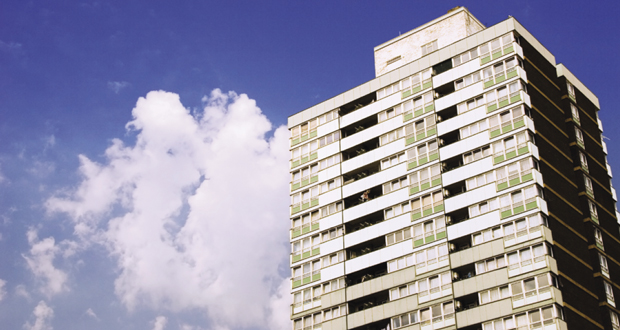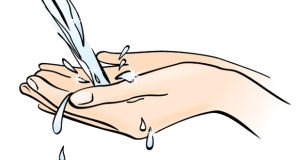FIRE DOORS
The Expert Panel has also updated advice on the assurance and assessment of Fire Doors, which applies to residential buildings at any height. It states that “further advice is provided on spandrel panels, balconies, external wall insulation systems, and smoke control systems.”
In particular, there is an entire section dealing with the responsibility of building owners for smoke control. It starts: “The Expert Panel believes that an appropriately designed, installed and maintained smoke control system is essential to effectively managing fire safety risks in a residential building.”
It stresses the importance of professional advice, saying firstly that building owners should be aware of what kind of smoke control system they have, and if they aren’t, they “should seek professional advice to ascertain how it should function”.
It reminds building owners that, “Smoke control systems should be tested weekly by the building owner to ensure that they are operating effectively, with a full system inspection and test carried out by a suitably qualified person at least annually.”
This guidance is important because of the extremely damaging nature of smoke, which is the number one cause of death in fires and responsible, in many non-fatal cases, for long-lasting respiratory damage.
SMOKE DAMAGE
Smoke is by far the biggest killer in fires. A staggering 34 per cent of those who die do so purely because they were overcome by gas and smoke, and for another 19 per cent the cause is a combination of burns and being overcome by gas and smoke. This is why smoke control systems are used, broadly speaking, to protect means of escape, to clear smoke from car parks, basements and atria, and to ensure that fire-fighting stairs remain usable. By getting rid of smoke, the systems also protect property and the future of businesses. If smoke damage is minimised, businesses can re-open more rapidly.
In terms of a smoke control systems, there are three ways of complying with legislation. You can follow the guidance in Approved Document B, you can follow the British Standards Public Guidance, or you can go for a fire-engineered solution, following specialist guidance. This is the solution that may give the most flexibility in building design, but it also requires a profound understanding of how to prevent fire spreading and of mitigating its effects. Put simply, you need an expert.
If your fire engineer is following this path, one of the pieces of guidance they will be able to use is the upcoming [soon to be published] Smoke Control Association’s CFD (computational fluid dynamics) Guide, which provides a consistent approach to the modelling and review process.
VENTS ISSUES
As outlined above, the new guidance also warns about problems with electro-magnetic holding devices for vents, which can fail in fire conditions, saying; “It is therefore recommended that the use of electromagnetic holding devices as part of any smoke ventilation shaft installation should be reviewed as part of the fire risk assessment with consideration being given to replacing these devices with a more robust form of vent actuator”. If this cannot be done immediately, the review should consider mitigation measures.
And, it continues, “The mitigation measures to be put in place will vary from building to building and you should seek professional advice from a suitably qualified fire engineer.
The local Fire and Rescue Service should also be informed and consulted on the planned mitigation measures”. This holds true for all control systems which should be checked regularly and repaired or replaced if necessary.
This report is welcome for the clear way in which it sets out the responsibility of building owners and the importance of obtaining appropriate professional advice. Expect more to come on the subject. In the Queen’s Speech last December, the Government announced that it will introduce a fire safety bill. The purpose, it says, is to “Deliver meaningful change to ensure an appalling tragedy like Grenfell can never happen again.”
This will make the responsibilities of building owners clear, and also ensure that they will be held to account for any failings.
All this should be a wake-up call for building owners. While some have acted irresponsibly it is also true that they may have a difficult time. They have, and need to be aware that they have, a great deal of responsibility in terms of fire, and they need professional assistance. If they call on Colt, the company has the knowledge, expertise and competence to check the compliance of systems, whether or not they are Colt systems, and can make recommendations for improvements.
The next generation of owners already have onerous responsibilities, but there is help available that will allow them to share part of the burden.
Finally, the current COVID-19 pandemic is going to put pressure on margins as companies struggle with reduced cash flow – the temptation to cut corners to secure additional work or to save money is going to increase – as will the temptation for contractors to procure at the cheapest price.
Without wanting to refer back to the tragedy of Grenfell, it is often the procurement side of contracting that often leads to the biggest problems. A bit of a sweeping statement, as many contractors have highly professional procurement teams, but there are others that are only interested in the price, regardless of the quality. Even in these challenging times, procurement of life safety systems must pay close attention to compliance and competence.





